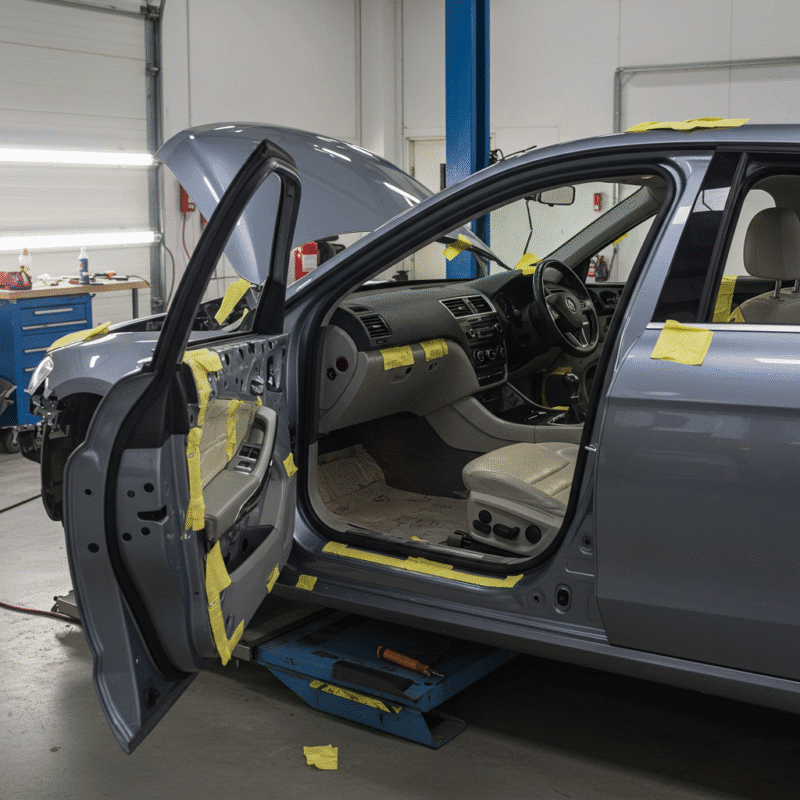Soundproofing is no longer just a luxury for car enthusiasts or high-end vehicle owners. As more people spend hours commuting, traveling, or simply enjoying music and conversations while on the road, the need for a quieter, more acoustically refined driving experience has become essential. What many drivers don’t realize is just how significantly in-car soundproofing can enhance both comfort and concentration. From reducing engine noise to minimizing vibrations and road hum, soundproofing your vehicle has real, tangible benefits that go far beyond surface-level luxury.
Table of Contents
ToggleWhy road noise matters more than you think
Every time you get behind the wheel, your vehicle becomes a moving acoustic environment. Engine vibrations, tire friction, air turbulence, and even the rattle of plastic panels all contribute to an ongoing symphony of distractions. These persistent noises are more than just an annoyance; they increase stress levels, impair communication between passengers, and reduce the clarity of in-car audio systems. Over time, this leads to fatigue, discomfort, and even potential hearing strain.
By applying strategic soundproofing solutions, you actively reclaim control over this noisy chaos. A quieter cabin makes every journey feel smoother, more luxurious, and surprisingly more productive. Whether you’re listening to music, navigating with voice instructions, or engaging in a hands-free business call, reducing external interference allows sound quality to flourish and enhances the overall experience.
Understanding where noise enters your vehicle
One of the biggest misconceptions about vehicle noise is that it only comes from the engine or tires. In reality, sound penetrates your car from multiple directions: the wheel wells, doors, roof, trunk, and even the floor panels. Without proper insulation, these entry points create a tunnel for vibrations and unwanted noise to invade your personal space.
Effective soundproofing addresses these zones with specialized materials that absorb and block vibrations. This includes high-density insulation mats, foam panels, and acoustic barriers designed specifically for automotive environments. When applied professionally and precisely, these materials work together to create a seamless acoustic shield, noticeably reducing internal decibel levels and enhancing the in-car atmosphere.
The benefits you’ll notice immediately
Drivers often underestimate how dramatically soundproofing can transform the driving experience. One of the first things you’ll observe is how your favorite music sounds fuller and more immersive. With background noise reduced, speakers no longer have to compete with engine roar or road hum, allowing crisp highs and deep bass to come through clearly.
You’ll also notice conversations become easier. Whether you’re speaking with passengers or using voice assistant features, clarity improves drastically when soundproofing minimizes echo and interference. And for those who use their vehicles for work—sales professionals, consultants, or mobile service providers—this enhanced audio environment creates a more professional and distraction-free space for client calls or navigation.
Common mistakes to avoid when soundproofing your car
One of the most frequent errors people make is assuming all insulation materials are equal. Generic products found in home improvement stores often lack the necessary thermal and vibration resistance needed for automotive environments. Not only can these materials underperform, but they may also pose safety risks if installed incorrectly.
Another common oversight is partial treatment. Soundproofing only one section—like doors or the trunk—can result in uneven noise control. To achieve noticeable improvements, a comprehensive approach is required. Overlooking key zones such as the floor or wheel arches leaves gaps in coverage that reduce the overall effectiveness of the installation.
Finally, trying to apply soundproofing without proper tools or experience can lead to poor results. Precision is crucial—panels must be removed, surfaces cleaned, and materials cut and applied with care. Seeking professional installation ensures that products perform as designed and deliver lasting benefits.
Practical steps for better acoustic performance
For those ready to invest in soundproofing, begin by evaluating your driving needs and the type of noise that affects your comfort most. Is it tire noise on the highway? Engine vibrations during acceleration? Or wind turbulence at higher speeds? Identifying the problem areas helps determine which treatments to prioritize.
Consider starting with the vehicle floor and doors, as these areas tend to have the greatest impact on overall cabin noise. From there, move to the trunk, roof, and wheel wells for a more complete solution. High-performance insulation mats specifically designed for cars are recommended over DIY alternatives, and consulting with a professional installer can help tailor the process to your specific vehicle model and lifestyle needs.
Bringing it all together
In a world where we increasingly value comfort and focus, soundproofing your vehicle is a practical upgrade that delivers far-reaching benefits. Beyond simply reducing noise, it transforms your car into a haven of clarity and calm—whether you’re heading to a meeting or escaping for the weekend. From enhancing audio quality to minimizing fatigue, this often-overlooked improvement redefines what driving should feel like.
To recap, successful soundproofing starts with understanding where noise comes from and using automotive-grade materials to insulate key zones such as the floor, doors, and wheel arches. Avoid common mistakes like using non-specialized materials or partial coverage, and consider professional help for optimal results. Ultimately, soundproofing isn’t just about silence—it’s about reclaiming control of your environment, protecting your focus, and enjoying every journey to its fullest.


